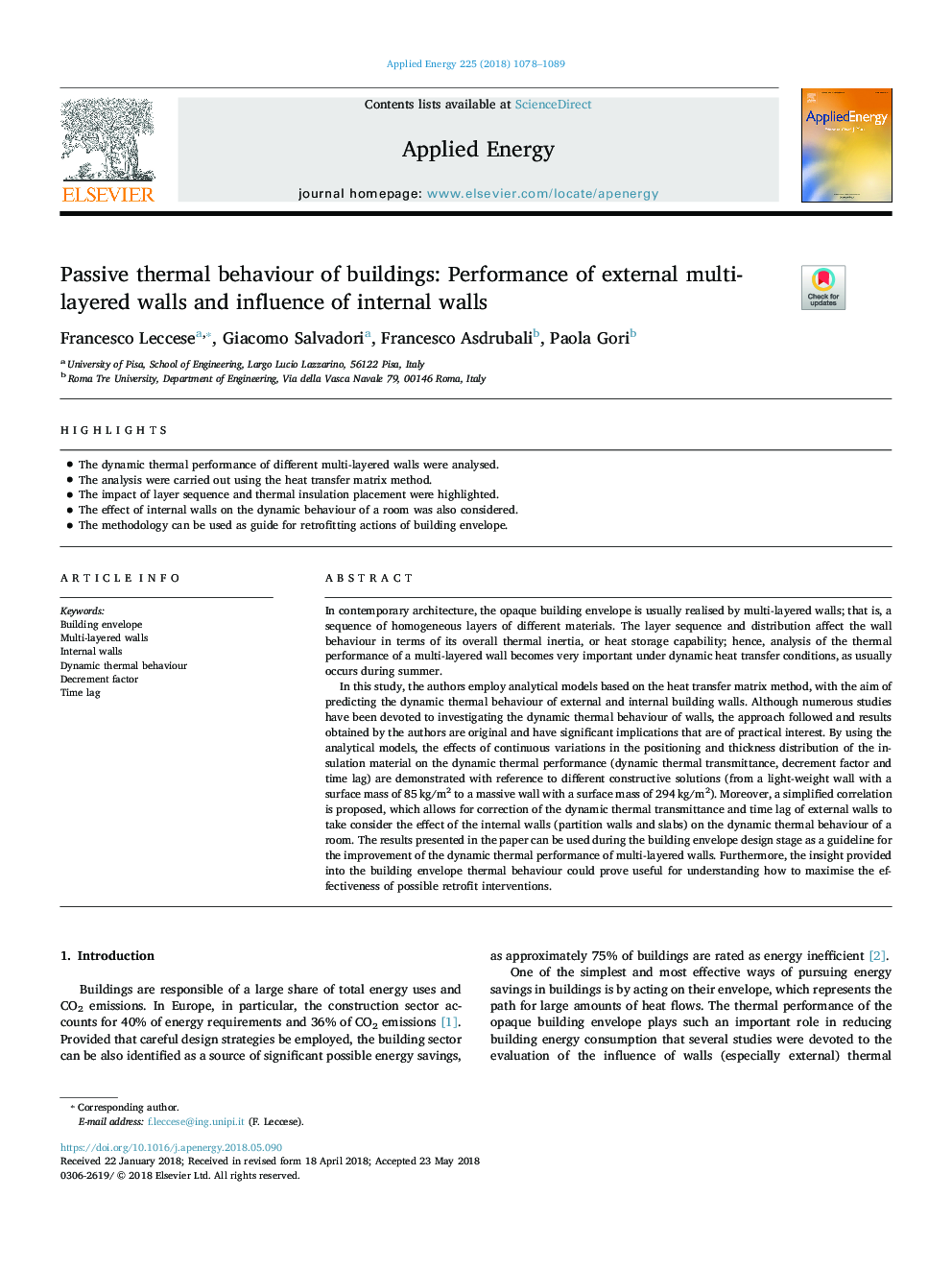| Article ID | Journal | Published Year | Pages | File Type |
|---|---|---|---|---|
| 6680010 | Applied Energy | 2018 | 12 Pages |
Abstract
In this study, the authors employ analytical models based on the heat transfer matrix method, with the aim of predicting the dynamic thermal behaviour of external and internal building walls. Although numerous studies have been devoted to investigating the dynamic thermal behaviour of walls, the approach followed and results obtained by the authors are original and have significant implications that are of practical interest. By using the analytical models, the effects of continuous variations in the positioning and thickness distribution of the insulation material on the dynamic thermal performance (dynamic thermal transmittance, decrement factor and time lag) are demonstrated with reference to different constructive solutions (from a light-weight wall with a surface mass of 85â¯kg/m2 to a massive wall with a surface mass of 294â¯kg/m2). Moreover, a simplified correlation is proposed, which allows for correction of the dynamic thermal transmittance and time lag of external walls to take consider the effect of the internal walls (partition walls and slabs) on the dynamic thermal behaviour of a room. The results presented in the paper can be used during the building envelope design stage as a guideline for the improvement of the dynamic thermal performance of multi-layered walls. Furthermore, the insight provided into the building envelope thermal behaviour could prove useful for understanding how to maximise the effectiveness of possible retrofit interventions.
Related Topics
Physical Sciences and Engineering
Energy
Energy Engineering and Power Technology
Authors
Francesco Leccese, Giacomo Salvadori, Francesco Asdrubali, Paola Gori,
